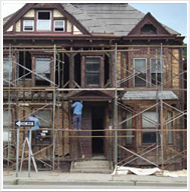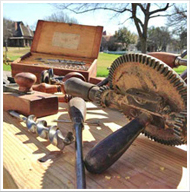What is a SHPO?
Your State Historic Preservation Officer (SHPO) is the appointed official in each of 59 states, territories and the District of Columbia who is responsible for helping to save the places that matter. Whether it is guiding citizens through the process of listing important historic resources or neighborhoods on the National Register of Historic Places, or considering the impact of large renewable energy projects on historic landscapes or archeological sites, your SHPO is your partner in preservation.
Federal Preservation Project Review - Section 106
After the widespread destruction of historic neighborhoods and places in the 1950’s and 1960’s, the National Historic Preservation Act of 1966 guaranteed that the federal government would consider the impact of federally funded or permitted projects on our nation’s historic resources. Section 106 of the Act established a consultation process to assure adequate public involvement.
The Historic
Preservation Fund
In order provide the resources to SHPOs to implement the federal requirements of the National Historic Preservation Act, congress established the Historic Preservation Fund. Not funded by our tax dollars, the HPF is funded by lease revenues generated on the Outer Continental Shelf.
Your SHPO
The Federal Historic Preservation Program
Preservation Advocacy
- Historic Preservation Advocacy Week
- Historic Preservation Fund
- Historic Tax Credit
- Pending Legislation









